Milky Way - Lughnasadh
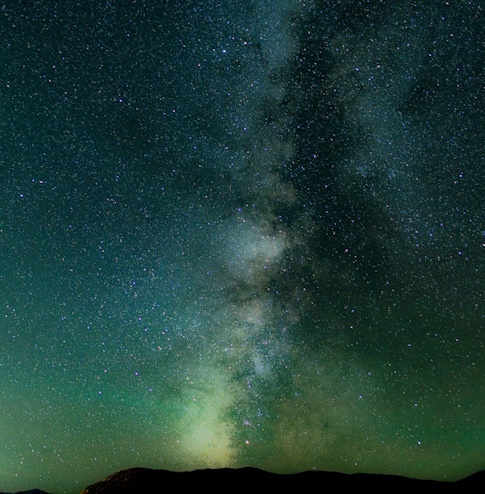
The best time to see the Milky Way is from February to October, usually between midnight and sunrise. This, of course, varies depending on your location and other factors like the moon phase. It is visible in the Northern sky May to July, and towards the Northwest and West July to November.
At the Hill of Tara many are drawn to experience the changing energies at sunrise and sunset, the sky wide and expansive above your head. At night the moon hangs low over the Mound of the Hostages, the Milky Way aligns with the Banqueting Hall and The Plough circles overhead.
If you go out on a starry night and look up at the sky you will see "The Milky Way." In ancient times the people used to call it "The Goose's Nest." Duchas Schools Collection
- Bealach Sheáin Uí Mhilleáin - Duchas Schools Collection
- An bóthar bó Finne - Road of the White Cow - Duchas Schools Collection
- Síog na nAingeal - Fairy Angels - Duchas Schools Collection
- Ceann Síne—"chief chain"
- Síog na Spéire—"stripe of the sky"
- Earball na Lárach Báine—"White Mare's Tail". The Láir Bhán (white mare) is believed to a relic of a sovereignty goddess, and processions featuring a white hobby horse formerly took place in County Kerry around Samhain.
- Claí Mór na Réaltaí—"Great Ditch/Fence of the Stars"
- Sgríob Chlann Uisnich—"Track of the children of Uisneach." This name derives from a legend: after the sons of Uisneach fell in battle, Deirdre threw herself into their grave. Angered, the king Conchobar mac Nessa exhumed the bodies and buried them separately, but a tree grew from each grave and the branches entwined. Again he had them dug up and buried on opposite sides of a lake; but then the great cluster of stars appeared across the sky, connecting the two graves. wikipedia.org - Milky_Way
"The Milky Way" also indicates the kind if weather likely to come. When it appears in the sky from East to West, cold dry weather comes and when running North to South mild wet weather follows. Duchas Schools Collection
Beaghmore Stone Circles, Co. Tyrone
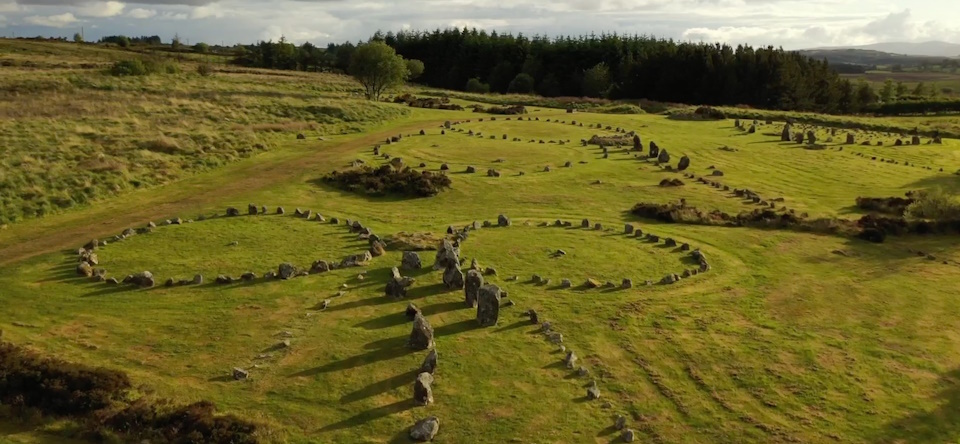
The sky reflected in historic alignments on the land?
Some archaeologists believe that the circles have been constructed in relation to the midsummer sunrise, or to record the movements of the sun and moon acting as markers in a calendar to identify certain lunar, solar or stellar events.
Three of the stone rows point to sunrise at the solstice and another appears to be aligned towards a lunar maximum.
The stones speak of ancient rituals and to a people who understood astronomy. When you visit this ancient site look up in wonder at the sky and reflect, that the people that built these monuments observed the same sky, sun, moon and stars. It must somehow involve the sky?
In Carnac Mirrors the Milky Way Peter van den Hoek suggests that Carnac could have been built as a mirror image of the Milky Way on Earth. Then each of the 3.000 erected menhirs could represent a star. He has a fascinating discussion on his theory on his website.
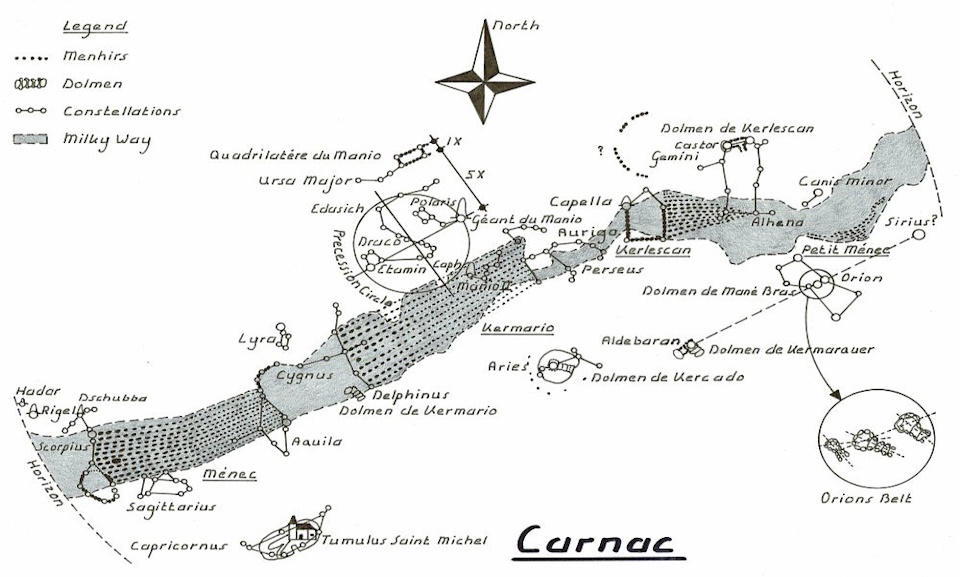
Brigid, Swans and the Milky Way
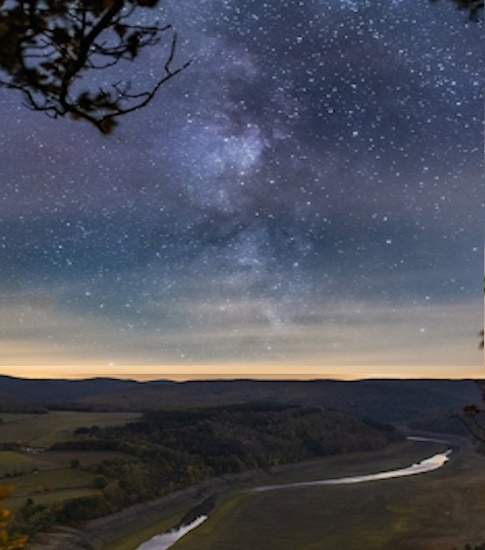
Colours connected to Brigid include white (geal) and symbolizes purity. White in the environment brings to mind the pristine snowy landscape during her festival in early February.
It is also the colour of her sacred food – milk and milk products. As an
infant she would tolerate no impure food, and was fed on the milk of
a white skinned, red eared cow. This immediately infers the symbolism
of an otherworldly spirit.
According to Robert Graves, one of her symbols was the White Swan.
Black the town yonder,
Black those that are in it,
I am the White Swan,
Queen of them all.
The Swan constellation travels on the Milky Way. Swan is said to be the dreamkeeper.
So many layers of symbolic meaning that come to us when we start linking to the spirit of place! Sometimes it is best to 'keep it simple' as we over interpret what we feel, and yet we do need to satisfy all realms of being, mental, physical, emotional and spiritual when sensing our environment and living / interacting with it.
Boyne, Blackwater and the Milky Way
Boinne, goddess of the River Boyne in Meath, is also anciently connected to white. Her name is interpreted as white cow, bó find. And here there is another connection to milk, as her river is likened to, and a heavenly reflection of, the Milky Way.
In the Dindshenchas, we are told that the Boyne river was formed when she approached Nechtain's Well and it overflowed, washing her along the river, mutilating her, and finally carrying her out to sea where she was drowned. There, we are told, her lapdog Dabilla was turned into the Rockabill Islands. This is undoubtedly a creation myth.
There is a wonderful retelling of 'How the Boyne got it's Name' here... Duchas Schools Project - How the Boyne got it's Name
Martin heard a podcast by Manchan Magan suggesting that Blackwater was originally called Bo Guaire, Sacred Cow. It arises from Virginia Lake, which is fed by Loughanleagh (the Lake of the Cures). The latter a site of another celebration hosted by John in 29 July 2018 - Loughanleagh, Co. Cavan - The Higher Ground archive
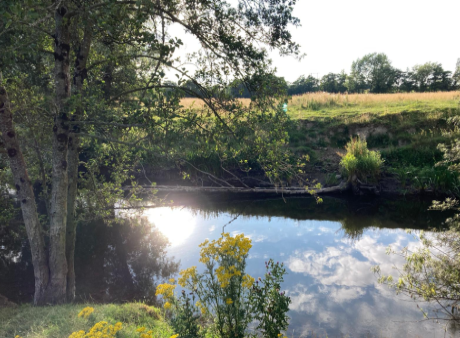 | The Blackwater is a tributary of the Boyne, relating to the Goddess Boann, the white cow, and the Milky Way. 2021 - Gratefully Using & Sharing our Power - Teltown |
Other River Connections
The Kaurna people of the Adelaide Plains in South Australia see the band of the Milky Way as a river in the sky world. They called it Wodliparri (wodli = hut, house, parri = river) and believe that positioned along the river are a number of campfires. In addition, the dark patches mark the dwelling place of a dangerous creature known as a yura; the Kaurna call these patches Yurakauwe, which literally means "monster water". wikipedia.org - Milky Way
Greek myths involve the suckling of Zeus's son, Heracles, while others tell an earlier tale, between the titans Rhea and Cronus. In both myths, the galaxy is divine mother's milk. Galaxias, which descends from the Greek gala, for milk, becomes our galaxy.
In South America, the Andean peoples believed the river Mayu to be the source of all water on earth. As the earth and sky are connected this aligned with the Milky Way in the sky.
Egyptian Goddess
In Egyptian mythology, the Milky Way was considered a pool of cow's milk. The Milky Way was deified as a fertility cow-goddess by the name of Bat:
Bat (or Bata) was an ancient Egyptian cow goddess associated with Upper Egypt.... Her name is the feminine form of the word “ba”, the name of one of the major elements of the soul. She was associated with the ankh (the symbol of life or breath) and with the sistrum (which was also associated with Hathor). Her cult centre was in Sheshesh, known as the “Mansion of the Sistrum”. Later on syncretized with the sky goddess Hathor. Ancient Egypt
The goddess of the sky and heavens was Nut - pronounced “newt”,
arching over the earth, her head in the west and her feet in the east.
She was the daughter of Shu, god of vital breath, and Tefnut, goddess of
heat.
Nut swallowed the sun in the evening and gave birth to it again in the morning.
She was also represented as a cow, the form she took in order to carry the sun god Ra on her back to the sky.

Straw = milky way
Although the Milky Way legends are usually linked to milk and rivers there are several cultures that have myths that it is straw - Armenian legends call the Milky Way the "Straw Thief's Way", and in the Middle East and Central Asia Persians, Pakistanis, Arabs and Turks may have borrowed it from the Armenians. Nativity - Winter Solstice
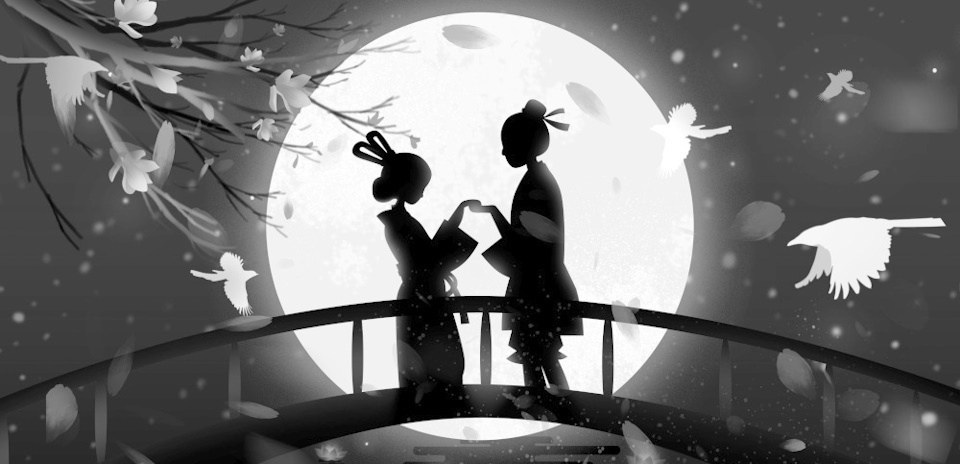
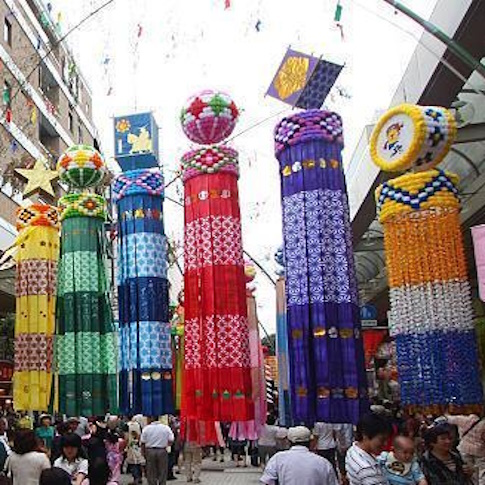
Tanabata festival
In Japan people celebrate by writing their wishes on small pieces of paper (called tanzaku) and hang them on bamboo branches. Other decorations including origami designs and colorful streamers may also be part of the display. Wish upon a star.
Celebrations take place over the summer but usually in August and especially in
Sendai, the largest Tanabata festival.
The Star festival seems to have started about 2000 years
ago, with an old Chinese legend. Orihime - aka Vega, a beautiful and gifted princess
of the sky king, and Hikoboshi - aka Altair, a cow herder prince
lived on the ‘starry’ river of the Milky Way.
One day, when they both met along this river, they fell in love. However, Orihime stopped weaving while Hikoboshi’s cows were wandering across the skies. This angered the sky king greatly and he separated the lovers across the Milky Way as a punishment.
Qixi Festival
A Chinese festival, on the 7th day of the 7th month, with a similar background legend to the Tanabata of lovers ( Zhinü the weaver, again symbolizing the star Vega and Niulang the cowherd, symbolizing the star Altair) being separated. Banished to either end of the Milky Way once a year a flock of magpies would create a bridge and they could meet.
On this day, the Chinese gaze up at the sky to look for Vega and Altair shining in the Milky Way, while Deneb, a third star, forms a symbolic bridge between the two stars. It was said that if it rains on this day, it was caused by a river sweeping away the magpie bridge or that the rain is the tears of the separated couple. Wikipedia for more of the story and customs





